In the isolated region of La Mosquitia, Honduras, narco-traffickers act as shock troops in the assault on native Miskitu, Tawahka, and Pech homelands, ruthlessly dispossessing residents and rapaciously converting forest commons to private pasture primed for sale to multinational corporations. A new report says that drug smuggling is increasing rates of deforestation and the influx of drug cash encourages ranchers, timber traffickers and oil palm growers to expand their activities.
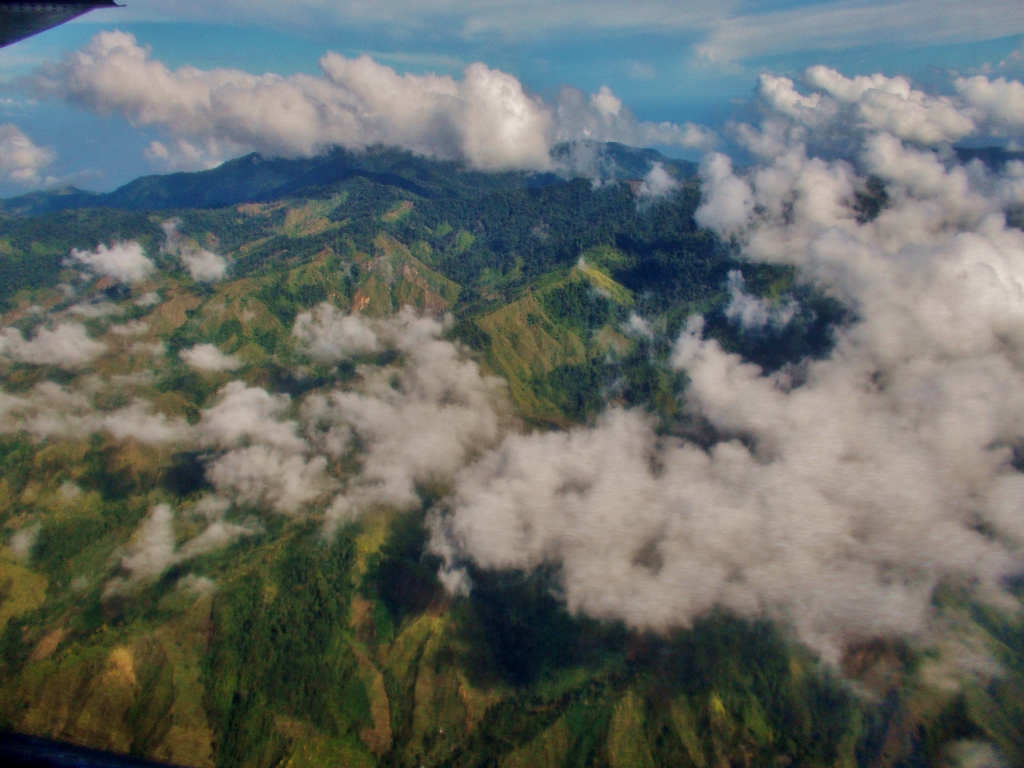

Prying Native People from Native Lands: Narco Business in Honduras
By Kendra McSweeney and Zoe Pearson, Published in North American Congress on Latin America
At last, there is good news from Honduras. Well, maybe. In September, the government of President Porfirio Lobo granted Miskitu people formal ownership over almost 3,000 square miles of their ancestral territory in the northeastern region known as La Mosquitia. This appears to be a vital victory in indigenous Hondurans’ struggle for territorial autonomy. But it can also be read as a deeply cynical gesture by a government that, facing an upcoming election, was keen to distract attention from its otherwise appalling record on native rights and its avaricious approach to indigenous lands and resources.
In just the past few months, the Honduran army has shot dead an indigenous Lenca leader protesting the construction of the Agua Zarca hydroelectric dam, and has imprisoned indigenous leader Berta Cáceres for her support of the protests. A few days after the killing, the “Law for the Promotion of Development and Reconversion of the Public Debt” was passed, which authorizes the administration to leverage the country’s “idle” resources as collateral to woo investment in resource extraction and agroindustry. Then, in mid-August, the administration issued a decree that allows the military to sell timber—legitimizing and incentivizing the longstanding practice of illegal military enrichment from indigenous forests.
Kendra McSweeny: “U.S.-led militarized interdiction, for example, has succeeded mainly in moving traffickers around, driving them to operate in ever-more remote, biodiverse ecosystems,” she said. “Reforming drug policies” — in other words, legalization — “could alleviate some of the pressures on Central America’s disappearing forests.”
These new laws join a body of others (including the Investment Promotion and Protection Act, the Public-Private Partnership Promotion Act, the unconstitutional Model Cities law, and more) passed since President Porfirio “Pepe” Lobo took power in the rushed election that followed the 2009 coup. All are aimed at privatizing Honduras’ water, land, minerals, and hydrocarbons. Many of these resources lie within indigenous territories, particularly in La Mosquitia—homeland to Miskitu, Tawahka, Pech, and Garífuna peoples. Lobo’s administration is quite open about its designs on this land- and resource-rich area. The 2010 “National Program for Investment Promotion” (later promoted as “Honduras is Open for Business”) for example, zones the Mosquitia for direct foreign investment in agribusiness, forestry, and energy. Already, construction of the Patuca III hydroelectric dam—which will have an adverse impact on thousands of downriver Miskitu and Tawahka residents—is well underway. Talks with British Gas Group over oil exploration in the Mosquitia have also begun. After all, the government retains sub-surface rights to all indigenous lands—including those just titled to the Miskitu.
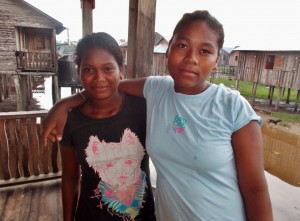

Narco-Dispossession of Native Homelands
But there is yet more reason to be deeply wary about inferring too much from this epic land ownership transfer: drug trafficking. Honduras is now infamous for its staggering rates of drug-related violence, but links between drug trafficking and Lobo’s resource-grabbing agenda are rarely made. In fact—especially in La Mosquitia—it is narco-traffickers who act as shock troops in the assault on native homelands, ruthlessly dispossessing residents and rapaciously converting forest commons to private pasture primed for sale. And traffickers simply do not care who owns what. If they want it, it’s theirs. Many observers consider most of the Mosquitia—including the newly titled areas—to be effectively controlled by drug-trafficking organizations (DTOs). But the narcos are not in the land-grabbing business for themselves alone; in the Mosquitia region, they represent the thin end of the corporate wedge prying native peoples from native lands.
We have observed these dynamics first-hand. On our last visits to the region, the dynamics of narco-dispossession were impossible to ignore. Residents recounted story after story of being coerced—by money or violence—to give up their lands. In the Miskitu town of Brus Laguna (pop. 11,000), for example, few residents plant their fields any more, since most agricultural lands were bought up by a narco. If locals wish to fish in the town’s lagoon, they must get traffickers’ permission.
In another community, a trafficker pressured an indigenous landowner to sell. When the landowner refused, he was killed by hitmen. His terrorized wife then sold the land at a very low price. In the Río Plátano Biosphere Reserve, whole communities have abandoned their lands following threats from traffickers. These instances make clear that land titles are only as meaningful as the guns and money that back them up.
Cocaine has been smuggled along the Mosquitia’s remote coastline since the 1970s. But the region’s trafficking importance grew after 2006, when Mexican DTOs shifted their operations southward after anti-drug crackdowns at home. Then, in 2009, the Honduran coup was followed by a brief suspension of U.S. military aid, temporary withdrawal of U.S. Drug Enforcement Agency (DEA) agents, and a political vacuum within the country.1 DTOs pounced on the opportunity to further entrench themselves in Honduras. Cocaine flows through eastern Honduras subsequently skyrocketed.2 By 2012, it was estimated that 86% of drug flights from South America landed first in the Mosquitia.3
Wild Isolation, Perfect for Drug Trafficking
Traffickers are drawn to the Mosquitia for its strategic location and convenient isolation. Cocaine shipments (by sea and air) are sent to airstrips cleared from interior savannas and forests near indigenous communities. The DEA and Honduran military monitor these “cocaine movements” from three new forward-operating bases. But they rarely reach the ever-shifting landing sites in time to intercept drug shipments, which are quickly transferred to dugout canoes, boats, or 4x4s for transit to inland redistribution hubs.
The flow of drugs leads to land dispossession because traffickers have to secure and control these transit zones, to launder their vast illicit profits, and to legitimize their presence under the guise of frontier cattle ranching. Buying up land accomplishes all three. Where there are pre-existing land titles, local bureaucrats are bribed to falsify title deeds and manipulate tax payments in order to separate long-time residents from their ancestral lands. Traffickers also saturate regional and state bureaucracies with payments to ensure impunity for their illegal land purchases. Those who dare to speak out about the process face death threats and violence. Once-crusading indigenous leaders have been silenced. When they petition state prosecutors for protection or help, their claims are lost or permanently postponed.
If the land is not already in pasture, traffickers pay local residents to clear the very forests they have long used and defended. This “improvement” greatly enhances the land’s value in the Honduran market. Narcos can then profit from the speculative land market that they create. In the Río Plátano Biosphere Reserve, for example, we saw the narco land rush drive land values up by 300% between 2002 and 2010. In some areas, locals report that the low-level traffickers who are buying and clearing these lands are selling to, or are contracted by, foreign narcos (from Mexico, Spain, Colombia, the United States) keen to invest in the Honduran land market. It seems quite possible, then, that the narco-driven enclosure of the Mosquitia is at least partly coordinated and/or financed by external DTOs. If so, this exemplifies a pattern of DTO diversification into rural economies (especially through agribusiness and mining) seen in Mexico and elsewhere.4
In the Mosquitia, the result is widespread dispossession, impoverishment, and ecological devastation. Entire communities have scattered; families that stay often survive as hired hands for rancher-traffickers (narcoganaderos). Residents speak under their breath about the climate of fear. As one Tawahka man told us, “There’s too much money, too many weapons—people are scared, I mean, to open their mouths. They’ve killed people!” A Miskitu resident put it simply: “We are afraid of them because they carry guns and threaten to kill us. There is no one here to stop them.”
Satellite imagery attests to this dispossession. The Mosquitia has long been an agricultural frontier, where settlers have chipped away at forest along the region’s western and southern edge. But since trafficking intensified after 2006, pasture clearing has accelerated sharply. Time-series satellite images reveal how the biodiverse patchworks of field, fallow, and forest—characteristic of native landscapes—are giving way to a narco-scape marked by massive, hastily cleared pastures proliferating cancer-like in the heart of indigenous homelands.5
If destroying indigenous lives, lands, and livelihoods were not enough, narco-trafficking also intensifies social inequalities within native communities. The very few native families who are complicit in drug trafficking have grown conspicuously wealthy, with lavish homes and consumer luxuries (flat screen TVs, generators, motorboats). Many act as brokers for their own community’s land—consolidating their neighbors’ smallholdings on behalf of narcos further up the chain. As they are enriched at the expense of their neighbors, the governance norms on which indigenous political solidarity is built are profoundly undermined. One villager told us: “the community has disintegrated…everybody fled…All of this conflict is related to the conflicts over land…[Narcos] want to create conflict and division within the communities to continue amassing lands in our area.”
In short: narcos are paving the way for corporate investment in the Mosquitia. In many ways, the Lobo administration could not have engineered a more effective process for quickly and quietly converting biodiverse indigenous commons into ecologically simplified private holdings “open for business.” Narco-trafficking has, after all, been astonishingly efficient at weakening once-powerful indigenous political coalitions, silencing once-outspoken indigenous leaders, and creating a climate of fear in which land is grabbed with impunity. Already, narco-led forest-to-pasture conversion has created a booming (if entirely illegal) land market, attracting outside (criminal) investors. Further, the presence of traffickers justifies militarized intervention in the region. According to many natives, the military presence is used as much to “secure” elite interests in indigenous lands as it is to deter traffickers. The predictable result is an intensification of violence overall: indigenous residents are now killed and intimidated by both narcos and anti-narcotics forces.6
Honduras is Open for Business, Legal and Illegal
Is it by coincidence or design that these narco-dynamics dovetail so well with the Honduran government’s pro-business goals in the Mosquitia? This is an open question. Many Hondurans, however, are quick to point out that there are rarely more than a few degrees of separation between politicians, military leaders, business elites, and traffickers.7 The most pertinent example here must surely be that of Honduran business tycoon, thug, and shadow politician Miguel Facussé. Coup plotter, he is also the uncle of a former president, and a key architect of “Honduras is Open for Business.” He runs Dinant Corporation, a vegetable oil and food conglomerate. He is aggressively expanding his African oil palm plantations into the Mosquitia and is known to be among the elites targeting indigenous lands, and using local intermediaries to brutally consolidate choice riparian lands on his behalf.
Facussé is also, by many accounts, enriched by narco-enterprise. A 2004 U.S. Embassy cable released in 2011 by Wikileaks, for example, shows that a drug plane landed and was unloaded on Facussé’s property under the protection of his private security force.8 According to a Miskitu leader: “Miguel Facussé has it all mapped out! He’s using local families to corner the land market with money from the drug traffic. He wants to plant African palm! And there are other powerful people doing the same thing.” Sure enough: the U.S. Treasury just froze the assets of Honduras’ Los Cachiros trafficking organization—assets that included cattle, oil palm, and mining businesses.
The United States is deeply complicit in this narco land grab. Lobo’s initiatives were scripted under the development model enshrined in the Central American Free Trade Agreement, which was aggressively pushed by the United States and signed in 2004. The DEA continues to work with, and fund, the deeply corrupt Honduran armed forces even as evidence mounts of disturbing human rights abuses. And it bears remembering that it was the U.S. obsession with militarized drug interdiction that drove traffickers from Caribbean islands and into Honduras in the first place. This endless cat-and-mouse game cannot be won; increased interdiction in one place will always just scatter traffickers elsewhere—a.k.a. the “cockroach effect.”
Now that the Miskitu own a big chunk of their territory, it is possible to imagine that they will be better equipped to fight the divide-and-conquer tactics of these narco-enabled corporate invaders. With legal title to their lands, Miskitu organizations now, presumably, have more leverage in pursuing restitution and repatriation through national and international legal mechanisms. At the same time, however, it is equally possible to imagine that the new land rights will make no difference at all to traffickers, who will continue to co-opt and terrorize residents regardless of the land tenure regime.
The 2,000-strong Tawahka people, for one, seem convinced of the latter. They are proceeding with plans to relocate women, children, and the elderly into exile in northern Nicaragua, leaving only men to try to fend off the narco-colonization of their ancestral lands along Honduras’ Patuca River.
Whether they and other dispossessed natives will ever return to their lands will likely hinge on traffickers’ ability to maintain their hold on the Mosquitia. That in turn depends on the profitability of their trade. One ray of hope in this regard has come from an unexpected source. In a report released earlier this year, the Organization of American States (OAS) offered an unprecedented multilateral endorsement of drug policy reform, suggesting that measured experimentation with some forms of drug legalization and regulation is the only way to substantially and permanently cut into traffickers’ profits and therefore their power.9
Another glimmer of hope came this past August, when U.S. Senator Patrick Leahy, chair of the Appropriations Committee, suspended Plan Merida drug-war funding for Mexican and Central American militaries. This suggests a very welcome rethinking of formerly knee-jerk re-financing of failed militarization strategies in the war on drugs.
Many hope that these developments signal the beginning of a sea change in how the United States confronts the damages wrought by drug trafficking in the hemisphere. Because ultimately, the fate of the Mosquitia’s people and forests is more likely to depend on Washington’s willingness to re-think its drug policy than on indigenous peoples’ land title victories—however historic those victories may be.
Sources
1. James Bosworth, “Honduras: Organized Crime Gaining Amid Political Crisis,” 2011, http://www.wilsoncenter.org/sites/default/files/Bosworth.FIN.pdf.
2. INCSR, 2013 International Narcotics Control Strategy Report. Washington, DC: Bureau of International Narcotics and Law Enforcement Affairs, 2013.
3. UNODC, Transnational organized crime in Central America and the Caribbean: a threat assessment. Vienna: United Nations Office on Drugs and Crime, 2012.
4. Douglas Farah, Central America’s Northern Triangle: a Time of Turmoil and Transition, 2013. http://www.ibiconsultants.net/_pdf/turmoil-and-transition-2.pdf; see also: Mónica Villanueva and María Idalia Gómez, “Controla narcotráfico minas en 5 estados,” 24 Horas, August 16, 2013, http://www.24-horas.mx/controla-narcotrafico-minas-en-cinco-estados/.
5. See: UN World Heritage Report 2011, #31. Río Plátano Biosphere Reserve (Honduras) (N 196); See also: “Devoradas 39 mil hectáreas de bosque en cinco años,” El Heraldo, May 20, 2012, http://www.elheraldo.hn/Secciones-Principales/Al-Frente/Imparable-destru….
6. See: Alexander Main and Annie Bird, “Still Waiting for Justice: An Assessment of the Honduran Public Ministry’s Investigation of the May 11, 2012 Killings in Ahuas, Honduras,” Center for Economic and Policy Research, April 2013, http://www.cepr.net/documents/publications/honduras-ahuas-2013-04.pdf.
7. See: Julie Marie Bunck, and Michael Ross Fowler, Bribes, Bullets, and Intimidation: Drug Trafficking and the Law in Central America. University Park, PA: The Pennsylvania State University Press, 2012; Steven Dudley, “Drug trafficking organizations in Central America: Transportistas, Mexican cartels, and maras,” San Diego, CA: University of San Diego Woodrow Wilson International Center for Scholars Mexico Institute, 2010.
8. Dana Frank, “WikiLeaks Honduras: US Linked to Brutal Businessman,” The Nation, October 21, 2011, http://www.thenation.com/article/164120/wikileaks-honduras-us-linked-bru….
9. OAS, The Drug Problem in the Americas. Washington, DC: General Secretariat, Organization of American States, 2013.



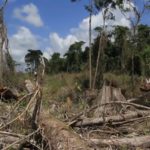
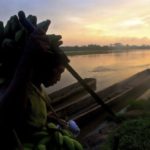
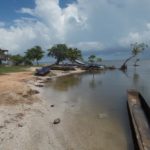
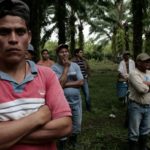






Pingback: Peru: llegal Gold Mining vs. Biodiversity and Ecotourism | WilderUtopia.com
Pingback: Mexico's Ayotzinapa 43: Revolutionary Movement Grows Amid US Silence | WilderUtopia.com
Pingback: Drug Trafficking in Honduras: Elite Family Arrested | WilderUtopia.com
Pingback: Honduras: World Heritage Biosphere Trafficked Toward Destruction